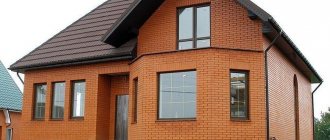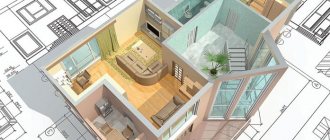A person rarely thinks that his home will one day be demolished. The native corner seems eternal and unshakable. But everything has its time, just like residential buildings, which sooner or later will turn into a pile of ruins. In their place, a new building will rise into which other people will move in, and a new cycle of urban life will begin.
Dear readers!
Our articles talk about typical ways to resolve legal issues, but each case is unique. If you want to find out how to solve your particular problem, please use the online consultant form on the right or call.
It's fast and free! How soon will a five-story Khrushchev building, a monumental Stalinist building or a high-rise building in a new residential complex live out its life?
Features of home operation
The issue of demolishing the old building is being considered from different angles. Standard operating periods are, rather, approximate figures that city planners can use as a guide, but do not necessarily follow.
An old five-story building, built on a good foundation and with major renovations, can stand for another half a century, while a brand new house can fall apart at the seams in a couple of years.
What people pay attention to when the question is raised about the lifespan of a house:
- Condition of housing. The most important point. Emergency buildings must be occupied as soon as possible, because this threatens human lives.
- Economic expediency.
A nondescript two-story house in the city center can stand for another half a century - but the cost of the land under it clearly does not correspond to its size and appearance. It could be demolished and a taller building built to accommodate more residents, or a building with larger commercial space would rise in its place. - Appearance. In the central part of most cities there are bound to be dilapidated buildings that spoil the overall picture. Such buildings are either demolished or renovated with mandatory façade finishing.
- Cultural and historical value. It is not at all easy to demolish such a building - an order is not enough for this. If the building is really so valuable, then it can stand for centuries, but it will certainly need restoration.
Panel house.
Service life of various types of residential buildings
Each era in the history of our country brought something of its own to urban planning. The Stalin era with its Empire style gave the country beautiful and durable houses, the post-war era - a huge amount of nondescript, but affordable housing. In modern times, residential high-rise buildings made of glass and concrete are springing up everywhere, as if out of the ground.
Find out what a meeting of owners is and how to conduct it here.
All this has its own standard expiration dates.
- Stalin's buildings. Service life – 125-150 years. They were built from 1930 to 1956.
- Housing that can be called elite without hesitation.
Spacious rooms, high ceilings, beautiful exterior decoration of the building - all this reflected the desire of the country's leadership to show how the young Soviet state was growing and strengthening. Of course, such houses were intended mainly for the nomenklatura, and after the change of government their construction was stopped - the high cost and complexity of the work did not allow the citizens to be resettled in their own apartments. The "Stalinists" were replaced by the "Khrushchevs" - Five-story panel houses. Service life – 50 years. They were built from 1955 to 1970 (in some cities until the early 80s).
- Back in the USSR, these houses were planned as temporary. But, unfortunately, the temporary has become “permanent” and is already worth even more than it should be due to the terms. In Moscow, panel Khrushchev buildings are being rapidly disposed of, but in the provinces they still exist in huge numbers. Not long ago, it was decided to carry out a major renovation program for such houses, which includes: insulation, external and internal decoration, and reconstruction of individual parts. Everything suggests that these temporary panels will last for more than one generation: cramped apartments that do not retain heat well are cheap, and therefore there is always a demand for them.
- Brick five-story houses. Service life – up to 100 years.
- A more comfortable version of the "Khrushchev" apartments. Brick houses are warmer and have better sound insulation, and their service life is twice as long as that of panel houses.
- Panel and block houses of the Brezhnev era. Service life – up to 100 years. Built from 1965 to 1980.
- By analogy with “Khrushchev” houses, such houses are called “Brezhnevka”.
The height of the houses varies from 9 to 16 floors. They have elevators and garbage chutes (the latter most often do not function today). The ceilings are higher and the kitchens are more spacious. The disadvantages of such houses are determined by the large number of people living in them. Dirty entrances and terrible-looking flights of stairs - this is about Brezhnevka. Today, reconstruction projects for such buildings are being developed, since demolishing them is unprofitable from an economic point of view. - Modern panel residential buildings. Service life is about 100 years. Built from the late 80s to the present day.
- Since today houses are most often built according to individual plans, the quality of such housing and its service life are very difficult to predict. It happened that within a month the happy owners of an apartment in such a house discovered cracks in the load-bearing walls.
- Modern brick, monolithic and monolithic-brick houses. Service life – 100-150 years. Built from the late 80s to the present day.
- The qualities of a well-built monolith made of concrete or brick house are excellent noise and heat insulation and resistance to environmental influences.
This video will tell you what the pros and cons of panel houses are:
Wear and tear of buildings
Regardless of the class and degree of capital, all buildings are subject to wear and tear over time.
Physical
Physical wear and tear means that, under the influence of natural factors, a building gradually loses some of its original physical properties and characteristics. The specific degree of wear varies depending on the characteristics of the materials, the design of the building, and the features of its location, incl. climatic and operating conditions.
The physical wear and tear of an entire building is generally determined according to the wear and tear of its constituent fragments.
It is determined by visual inspection of the building, methods of monitoring and testing structures using special devices and tools.
Moral
Obsolescence arises due to gradual technological development in society and is defined as a discrepancy in functional purpose.
Signs of obsolescence of a building:
- The layout of the apartments does not meet modern requirements.
- Engineering equipment systems are outdated.
- Excessive building and settlement density.
- Insufficient landscaping and landscaping.
The first type of obsolescence is determined by a decrease in the price of a building in comparison with the time of its construction due to the simplification, and therefore reduction in cost, of the construction process, as well as due to the construction of more modern housing. Accordingly, it is necessary to periodically re-evaluate the housing stock.
The second type determines the obsolescence of the building and its constituent elements in relation to the currently existing requirements for space-planning, sanitary-hygienic and other solutions, landscaping, landscaping, etc.
Service life of buildings according to SNIP
The table shows the approximate service life of various buildings.
How to avoid paying for major repairs, read the link.
| Buildings and structures erected for temporary residence (kiosks, pavilions, cabins for builders and workers, market structures) | 10 years |
| Buildings and structures operated under aggressive environmental influences (pipelines, chemical industry tanks, storage facilities, etc.) | 25 years |
| Industrial, residential and commercial buildings of mass construction (residential buildings, industrial buildings, shops, public service buildings, etc.) | From 50 years old |
| Unique buildings, buildings of cultural value (stadiums, theaters, museums, repositories of national treasures) | From 100 years and above |
Examination of the condition of a residential building
The assessment of a residential building is carried out by expert groups, both state and independent. It can be carried out either planned or based on statements from residents who believe that their house does not meet the necessary standards.
Reasons for examination:
- Excessive wear and tear on a residential building;
- Non-compliance with required standards;
- Trial.
Find out how to determine which area is adjacent to your home by following the link.
The procedure for inspecting a building by experts looks like this:
- Visual assessment of all systems of a residential building (foundation, supporting structures, sanitary systems);
- Instrumental assessment of all systems of a residential building;
- Inspection of living conditions (quality of drinking water, sewerage, air and soil pollution).
What ODN is and how you can calculate it yourself is described in this article.
Based on the examination, a conclusion is made about the suitability of the house. If the wear is more than 70%, it will be considered emergency. A slightly lower degree of wear and tear is also a reason for either demolition of the building or major repairs.
How much do houses cost?
If the house is not recognized as unsafe, but certain aspects in the conclusion are considered to be non-compliant with the standards, the question of reconstruction and finishing of the building will be raised.
How you can manage an apartment building, read more here.
When the house reaches its last days
A decision on the unsuitability of a residential building is made by a judicial commission based on the conclusion of an expert group.
What work must be included in the landscaping of the territory, read the link.
If a decision is made, the building has two options:
- Major renovation. For it, two conditions must be met: the technical feasibility of the repair and its feasibility. Repairs can be carried out if the building has a safety margin and there are no serious risks for its occupants.
- Demolition.
A building recognized as unsafe and potentially dangerous is subject to demolition. Residents are resettled in new apartments, which should be similar in size to those in which they lived. As a rule, a new building is built on the site of a demolished building; in some cases, former residents of an old building can get an apartment in this new building.
Which house is better, watch in this video:
Our country's housing stock is gradually deteriorating. The country inherited a huge number of residential buildings from the Soviet Union, and many of them could very soon become unsafe. Resolving issues regarding the construction of new houses is one of the most important tasks facing the state.
What does this period depend on?
The actual service life of buildings and structures depends on the quality of building materials and the regularity of repairs. Particular attention should be paid to methods of operation. Dangerous repair work can cause the entire house to collapse.
A separate house should undergo preventive repairs. For this purpose, there are special commissions that determine the degree of wear.
In addition, the quality of building materials affects the strength and durability of a residential building. In addition to its physical condition, the house also has obsolescence. An old building may remain of high quality for a long time, but not fit into the new requirements for improvement.
This moment greatly affected the Khrushchevs. Formally, they are suitable for living, but they have an unattractive appearance and an inconvenient apartment layout. When constructing new buildings, this aspect is also taken into account. Therefore, they will not grow old for a long time.
We recommend that you read our other articles that will explain the concept of terms such as service life and operation, as well as find out what affects the service life of a car, LED lamps, gas stoves, smartphones, refrigerators, polypropylene pipes, washing machines, and televisions.
Free consultation with a real estate lawyer - contracts, transaction registration, eviction/move-in
A person rarely thinks that his home will one day be demolished. The native corner seems eternal and unshakable. But everything has its time, just like residential buildings, which sooner or later will turn into a pile of ruins. In their place, a new building will rise into which other people will move in, and a new cycle of urban life will begin.
Dear readers! Our articles talk about typical ways to resolve legal issues, but each case is unique.
If you want to find out how to solve your particular problem, please use the online consultant form on the right or call. It's fast and free!
How soon will a five-story Khrushchev building, a monumental Stalinist building or a high-rise building in a new residential complex live out its life?
Punishment for violation
If the developer committed certain violations regarding any building codes, as well as the timing of putting the building into operation, he faces administrative punishment in the form of a fine.
However, in addition to this penalty, residents of the building, or owners of apartments that were purchased but not yet occupied, have the right to apply to the judicial authorities with a claim for the recovery of a penalty in a certain amount due to the developer’s violation of the deadlines for putting the building into operation.
Durability of brick walls of different designs
The masonry is heterogeneous - it uses cement mortar, bricks, and finishing. Walls made of ordinary brick need thermal insulation - you have to install an additional layer of insulation and finishing. The estimated service life of a wall with thermal insulation is shorter - the insulation loses its properties faster than brick. Single-layer brick walls do not have this problem - during major repairs, cracks are eliminated (if they form) and the finish is restored. It is easier and cheaper to restore thermal insulation, so GOOD WOOD works with porous Porotherm blocks - “warm” ceramics do not require additional layers of mineral wool.
Procedure
Work to inspect the condition of construction projects is a complex multi-level study.
The procedure is performed in stages:
- Familiarization with the object and drawing up a work plan.
- Preliminary inspection of building elements.
- A thorough technical study establishing the physical and technical characteristics of the structure.
- Determination of parameters of strength, stiffness and cracking resistance.
- Assessment of the technical condition and operating conditions of the facility based on the results obtained.
- Initial identification of dangerous defects, damage and deformation of elements that are in emergency condition, and development of localizing measures.
- Determining a safe method of access to the object being repaired.
- Development of measures to ensure operational requirements for the building.
The scope of survey work is determined in the customer’s technical specifications.
In accordance with the terms of reference for the study, various methods are used:
- acoustic,
- radiometric,
- magnetometric,
- vibrating.











